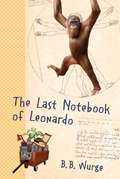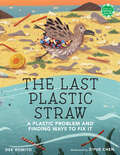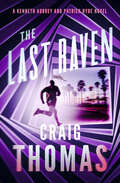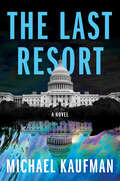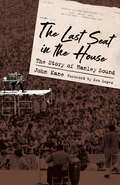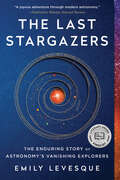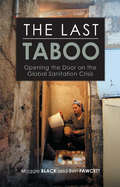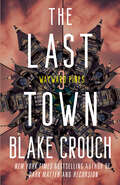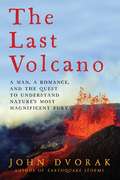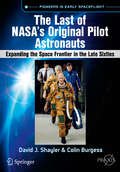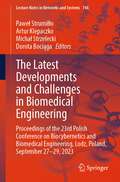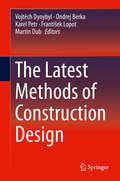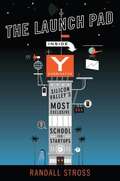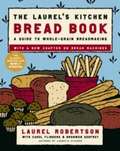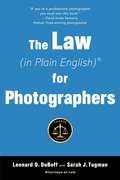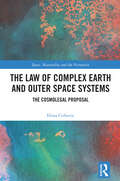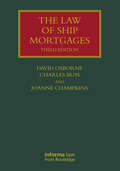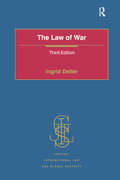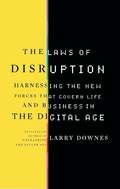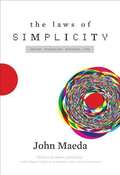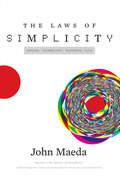- Table View
- List View
The Last Notebook of Leonardo
by B. B. WurgePraise for Squiggle and Billy and the Birdfrogs:"The characters are exceptional, weird, true to life, funny, scary, different, and definitely perk the story . . . an exceptional job. . . . Children will truly enjoy this book."-Midwest Book Review"Billy survives by the sheer weight of its own insane internal logic. . . . For those funny-book junkies out there, Billy fulfills a need. Downright weird, and that's a-okay with me, it's worth a gander."-School Library Journal"One of the best books we have read this year . . . intelligent, well composed, with a strong narrative, likable characters, and just enough scariness and tension to make it hard to put down."-BooksForKids.com"Mystery, suspense, and conflict build a plot of nonstop adventure. Character development is superb . . . clever illustrations, delightful humor, and a marvelous story. . . . Entertaining, downright funny, and highly imaginative. A great read."-Midwest Book ReviewJem's father, a scientific genius, turns himself into a nine-foot orangutan. When their landlord suggests that they leave, they pack their belongings onto a huge wagon and set out on the ultimate adventure: to find the last resting place of Leonardo da Vinci, who, according to his last notebook, may not have died in Italy. They are joined by an old Indian woman, and the threesome's adventures lead to the most unlikely of places-and meetings. Tidbits of science, fun facts about da Vinci and his works, and B.B. Wurge's trademark wacky humor, minimalist illustrations, and lessons on the importance of family make this third novel as exciting as the last two.
The Last Plastic Straw: A Plastic Problem and Finding Ways to Fix It (Books for a Better Earth)
by Dee RomitoLearn how and why a useful, 5000-year-old invention has become a threat to our planet—and what you can do about it—in this history of the simple straw. <P><P> From reeds used by ancient Sumerians to bendy straws in World War II hospitals, people have changed the straw to fit their needs for 5000 years. Today however, this useful tool is contributing to the plastic problem polluting our oceans. Once again, the simple straw needs a reinvention. <P><P> With bright illustrations and well-researched text, children can read about the inventors behind the straw’s technological advancements, including primary sources like patents, as well as how disposable plastic harms the environment. See the newest solutions, from plastic straw alternatives to activism by real kids like Milo Cress who started the Be Straw Free campaign when he was 11 years old. <P><P> Learn about what kids can do to reduce plastic waste. The backmatter includes more information on the movement to stop plastic waste, action items kids can do, a bibliography, and additional resources on plastic pollution. <P><P><i>Advisory: Bookshare has learned that this book offers only partial accessibility. We have kept it in the collection because it is useful for some of our members. Benetech is actively working on projects to improve accessibility issues such as these.</i>
The Last Raven (The Kenneth Aubrey & Patrick Hyde Series)
by Craig ThomasThe downing of a Russian military plane has dangerous global consequences in this spy thriller from the New York Times–bestselling &“master of suspense&” (The Pittsburgh Press). Spymaster Sir Kenneth Aubrey thinks operative Patrick Hyde is dead. Hyde is, in fact, alive, but after witnessing a military airline being shot down by a team including both KGB and CIA, he may not be for long. As Hyde tries to elude capture and get evidence to British intelligence, Aubrey is drawn into intrigue concerning the suspicious crash of a civilian airliner in America—and both will be racing against time to put the pieces together in this edge-of-your-seat thriller that ranges from Gorbachev&’s Russia to Central Asia to sunny California . . . &“Exciting . . . Aubrey and Hyde wear well.&” —Kirkus Reviews &“The denouement is stark and gripping.&” —Publishers Weekly
The Last Resort (A Jen Lu Mystery #2)
by Michael KaufmanMargaret Atwood meets Raymond Chandler meets Greta Thunberg: Jen Lu is back on the case when the death of a lawyer sparks an even more intriguing mystery in Michael Kaufman&’s second book in the thrilling series.It&’s March 2034, six months after D.C. police detective Jen Lu and Chandler, her sentient bio-computer and wannabe tough guy implanted in her brain, cracked the mystery of Eden. The climate crisis is hitting harder than ever: a mega-hurricane has devastated the eco-system and waves of refugees pour into Washington, D.C.Environmental lawyer and media darling Patty Garcia dies in a bizarre accident on a golf course. Of the seven billion people on the planet, only Jen thinks she was murdered. After all, Garcia just won a court case for massive climate change reparations to be paid out by oil, gas, and coal companies. Jen is warned off, but she and Chandler start digging. Signs point to Garcia&’s abusive ex, a former oil giant, but soon Jen turns up more suspects who have an even greater motive for committing murderSoon Jen is in the crosshairs of those who will ensure the truth never comes to light, no matter the cost. She has to move quickly before she becomes next on the killer&’s list.
The Last Seat in the House: The Story of Hanley Sound (American Made Music Series)
by John KaneKnown as the "Father of Festival Sound," Bill Hanley (b. 1937) made his indelible mark as a sound engineer at the 1969 Woodstock Music and Arts Fair. Hanley is credited with creating the sound of Woodstock, which literally made the massive festival possible. Stories of his on-the-fly solutions resonate as legend among festivalgoers, music lovers, and sound engineers. Since the 1950s his passion for audio has changed the way audiences listen to and technicians approach quality live concert sound. John Kane examines Hanley’s echoing impact on the entire field of sound engineering, that crucial but often-overlooked carrier wave of contemporary music. Hanley’s innovations founded the sound reinforcement industry and launched a new area of technology, rich with clarity and intelligibility. By the early seventies the post-Woodstock festival mass gathering movement collapsed. The music industry shifted, and new sound companies surfaced. After huge financial losses and facing stiff competition, Hanley lost his hold on a business he helped create. By studying both his history during the festivals and his independent business ventures, Kane seeks to present an honest portrayal of Hanley and his acumen and contributions. Since 2011, Kane conducted extensive research, including over one hundred interviews with music legends from the production and performance side of the industry. These carefully selected respondents witnessed Hanley’s expertise at various events and venues like Lyndon B. Johnson’s second inauguration, the Newport Folk/Jazz Festivals, the Beatles' final tour of 1966, the Fillmore East, Madison Square Garden, and more. The Last Seat in the House will intrigue and inform anyone who cares about the modern music industry.
The Last Stargazers: The Enduring Story of Astronomy's Vanishing Explorers
by Emily LevesqueThe story of the people who see beyond the starsHumans from the earliest civilizations were spellbound by the night sky-craning their necks each night, they used the stars to orient themselves in the large, strange world around them. Stargazing is a pursuit that continues to fascinate us: from Copernicus to Carl Sagan, astronomers throughout history have spent their lives trying to answer the biggest questions in the universe. Now, award-winning astronomer Emily Levesque shares the stories of modern-day stargazers, the people willing to adventure across high mountaintops and to some of the most remote corners of the planet, all in the name of science.From the lonely quiet of midnight stargazing to tall tales of wild bears loose in the observatory, The Last Stargazers is a love letter to astronomy and an affirmation of the crucial role that humans can and must play in the future of scientific discovery.In this sweeping work of narrative science, Levesque shows how astronomers in this scrappy and evolving field are going beyond the machines to infuse creativity and passion into the stars and inspires us all to peer skyward in pursuit of the universe's secrets.
The Last Taboo: Opening the Door on the Global Sanitation Crisis
by Maggie Black Ben FawcettExcept in schoolboy jokes, the subject of human waste is rarely aired. We talk aboutwater-related diseases when most are sanitation-related - in short, we don‘t mention the shit. A century and a half ago, a long, hot summer reduced the Thames flowing past the UK Houses of Parliament to aGreat Stink thereby inducing MPs to legislate sanitary reform. Today, another sanitary reformation is needed, one that manages to spread cheaper and simpler systems to people everywhere. In the byways of the developing world, much is quietly happening on the excretory frontier. In 2008, the International Year of Sanitation, the authors bring this awkward subject to a wider audience than the world of international filth usually commands. They seek the elimination of theGreat Distaste so that people without political clout or economic muscle can claim their right to a dignified and hygienic place togo. Published with UNICEF
The Last Town: Wayward Pines: 3 (The Wayward Pines Trilogy #3)
by Blake CrouchThe final book of the smash-hit Wayward Pines trilogy from the New York Times bestselling author of Dark Matter, Recursion, and UpgradeWhat&’s inside was a nightmare. What&’s outside is a thousand times worse.Welcome to Wayward Pines, the last town.Secret Service agent Ethan Burke arrived in Wayward Pines, Idaho, three weeks ago. In this town, people are told who to marry, where to live, where to work. No one is allowed to leave; even asking questions can get you killed.But Ethan has discovered the astonishing secret of what lies beyond the electrified fence that surrounds Wayward Pines and protects it from the terrifying world beyond. And now that secret is about to come storming through the fence to wipe out this last, fragile remnant of humanity.The Last Town at last pitches Ethan Burke and his fellow residents into all-out war against the forces outside the town&’s gates—and in doing so delivers every bit the riotously horrific, breathlessly action-packed conclusion that the Wayward Pines trilogy deserves.
The Last Volcano: A Man, a Romance, and the Quest to Understand Nature's Most Magnificent Fury
by John DvorakRanging from Yellowstone in Wyoming to Mount Pelee in the Caribbean, from Bogoslof and Pavlov in Alaska, to Sakurajima in Japan, and, finally, to the massive volcanoes of Kilauea and Mauna Loa in Hawaii—The Last Volcano reveals the incredible journey of a man on a mission to understand the awesome power of volcanic eruptions. Volcanoes have fascinated—and terrified—people for ages. They have destroyed cities and ended civilizations. John Dvorak, the acclaimed author of Earthquake Storms, looks into the early scientific study of volcanoes and the life of the man who pioneered the field, Thomas Jaggar. Educated at Harvard, Jaggar went to the Caribbean after Mount Pelee exploded in 1902, killing more than 26,000 people. Witnessing the destruction and learning about the horrible deaths these people had suffered, Jaggar vowed to dedicate himself to a study of volcanoes. What followed was fifty years of global travel to eruptions in Italy, Alaska, Central America, Japan and the Pacific. In 1912, he built a small science station at the edge of a lake of molten lava at Kilauea volcano in the Hawaiian Islands, with the goal of solving the mystery of why volcanoes erupt and how they could be predicted. Jaggar found something else at Kilauea: true love. She was Isabel Maydwell, a widowed school teacher who came to Kilauea to restart her life. For more than twenty ears, she and Jaggar ran the science station, living in a small house at the edge of a high cliff that overlooked the lava lake. Maydwell would quickly becoming one of the world’s most astute observers of volcanic activity. Mixed with tales of myths and rituals, as well as the author’s own experiences and insight into volcanic activity, The Last Volcano reveals the lure and romance of confronting nature in its most magnificent form—the edge of a volcanic eruption.
The Last of NASA's Original Pilot Astronauts: Expanding the Space Frontier in the Late Sixties (Springer Praxis Books)
by Colin Burgess David J. ShaylerResulting from the authors' deep research into these two pre-Shuttle astronaut groups, many intriguing and untold stories behind the selection process are revealed in the book. The often extraordinary backgrounds and personal ambitions of these skilled pilots, chosen to continue NASA's exploration and knowledge of the space frontier, are also examined. In April 1966 NASA selected 19 pilot astronauts whose training was specifically targeted to the Apollo lunar landing missions and the Earth-orbiting Skylab space station. Three years later, following the sudden cancellation of the USAF's highly classified Manned Orbiting Laboratory (MOL) project, seven military astronauts were also co-opted into NASA's space program. This book represents the final chapter by the authors in the story of American astronaut selections prior to the era of the Space Shuttle. Through personal interviews and original NASA documentation, readers will also gain a true insight into a remarkable age of space travel as it unfolded in the late 1960s, and the men who flew those historic missions.
The Latest Developments and Challenges in Biomedical Engineering: Proceedings of the 23rd Polish Conference on Biocybernetics and Biomedical Engineering, Lodz, Poland, September 27–29, 2023 (Lecture Notes in Networks and Systems #746)
by Paweł Strumiłło Artur Klepaczko Michał Strzelecki Dorota BociągaThe book contains 35 chapters, in which you can find various examples of the development of methods and/or systems supporting medical diagnostics and therapy, related to biomedical imaging, signal and image processing, biomaterials and artificial organs, modelling of biomedical systems, which were presented as current research topics at the 23rd Polish Biocybernetics and Biomedical Engineering Conference, held at the Institute of Electronics, Lodz University of Technology in September 2023. The ongoing and dynamic development of AI-based data processing and analysis methods plays an increasingly important role in medicine. This book addresses these issues by presenting applications of such methods in various areas, such as disease diagnosis and prediction, particularly through the use of image data analysis algorithms. Other topics covered include personalized medicine, where multimodal patient data is acquired and analyzed, as well as robotic surgery and clinical decision support.The book is of interest to an advanced and broad readership, including researchers and engineers representing both medical, biological, and engineering viewpoints. Its readers may also be graduate and postgraduate students in various fields such as biomedical engineering, artificial intelligence, biomaterials, and medical electronics, as well as software developers in R&D departments working in the field of intelligent healthcare engineering.
The Latest Methods of Construction Design
by Vojtěch Dynybyl Ondrej Berka Karel Petr František Lopot Martin DubThis book is based on the 55th International Conference of Machine Design Departments 2014 (ICMD 2014) which was hosted by the Czech Technical University in September 2014. It features scientific articles which solve progressive themes from the field of machine design. The book addresses a broad range of themes including tribology, hydraulics, materials science, product innovation and experimental methods. It presents the latest interdisciplinary high-tech work. People with an interest in the latest research results in the field of machine design and manufacturing engineering will value this book with contributions of leading academic scientists and experts from all around the world.
The Launch Pad
by Randall StrossA behind-the-scenes look at how tomorrow’s hottest startups are being primed for greatness Investment firm Y Combinator is the most sought-after home for startups in Silicon Valley. Twice a year, it funds dozens of just-founded startups and provides three months of guidance from Paul Graham, YC’s impresario, and his partners. Receiving an offer from YC creates the opportunity of a lifetime. Acclaimed journalist Randall Stross was granted unprecedented access to Y Combinator, enabling a unique inside tour of the world of software startups. Over the course of a summer, we watch as a group of founders scramble to make something people want. This is the definitive story of a seismic shift in the business world, in which coding skill trumps experience, undergraduates confidently take on Goliaths, and investors fall in love. .
The Laurel's Kitchen Bread Book: A Guide to Whole-Grain Breadmaking
by Carol Lee Flinders Laurel Robertson Bronwen GodfreyFrom the simplest white bread, to the most complicated holiday bread, the recipes is probably in this book. Want to try your hand at making sourdough started? Looking for something to do with spelt? Are you longing for the tastes of Grandma's kitchen? This is a marvelous reference as well as a useful cookbook, and there is plenty for the armchair cook, too.
The Law (In Plain English)
by Leonard D. DuBoff Sarah J. Tugman&“If you&’re a professional photographer, you must own this book.&” —David Hume Kennerly, Pulitzer Prize winner, former White House photographer, University of Arizona presidential scholar The All-in-One Resource for Photographers at All Levels In The Law (in Plain English)® for Photographers, Leonard D. DuBoff and Sarah J. Tugman walk readers through the legal landscape of the photography business. In easy-to-understand terms and with plenty of examples, this comprehensive resource covers everything from organizing a business to privacy rights to copyright questions. Clearly outlined chapters will help readers to:Comprehend intellectual property lawsIdentify defamation and libelDistinguish rights of privacy and publicityNavigate censorship and obscenity rulesUnderstand photo licenses and restrictionsOrganize a photography businessDraft strong contracts and resolve disputesProperly file taxes and take advantage of deductionsSelect and utilize insurance plansPrepare an estate plan To master the legal side of the business, all photographers need to have this essential guide in their libraries.
The Law and Business of International Project Finance
by Scott L. HoffmanThis 2007 third edition continues to be a comprehensive and authoritative guide to the business, practice, law, and practical use of project finance. It covers the complete project finance structure, from conception to negotiation to debt closing, and from project difficulties to successful restructuring. The book continues to be accessible to those with little experience in project finance, while maintaining the insight and detail of previous editions that has made it a valuable reference for the experienced lawyer, manager, banker, contractor, and government official. This edition focuses on a real-world, practical approach to project finance, without the overuse of case studies and economic theory. Yet the contract forms, detailed glossary, index, and project finance bibliography make it a complete text.
The Law for Energy Prosumers: The Case of the Netherlands, New Zealand and Colombia
by Daniela Aguilar AbaunzaThis book argues that law has a vital role in shaping the electricity system to enable a more active role for consumers in liberalizsed electricity industries. To do that, this book offers a unique legal perspective of the Netherlands, New Zealand and Colombia to help understand some of the current legal approaches to prosumers and therefore the legal challenges and opportunities facing. Law and regulation have the role of creating a level playing field for emerging participants, such as prosumers, to participate and compete in the market together with traditional actors, bringing not only more competition but also representing a more sustainable, environmental and democratic way to supply energy. Furthermore, law and regulation have the role of responding to innovation and creating space for technological advances to procure the changes in the industry without delay. This book examines some of the legal barriers for the raise of energy prosumers. The traditional role of the distributor when responding to increasing distributed generation in the network; prosumers unable to decide to whom they can sell their electricity to; the price of the energy or even whether to participate more actively in demand response programs. A further issue is the lack of clarity about whether small prosumers are entitled to consumer protection rights and legal challenges regarding configuration, access to the network, access to markets and strict unbundling rules for community energy projects. This book provides a clear, analytical, and informed approach to understanding the regulatory framework around energy prosumers. It will appeal to policy makers, lawyers, individuals, business entrepreneurs or communities wanting to engage in energy projects, as well as academics, researchers and students
The Law of Complex Earth and Outer Space Systems: The Cosmolegal Proposal (Space, Materiality and the Normative)
by Elena CirkovicThis book offers a paradigm-shifting exploration of lawmaking for the complex interactions between Earth systems and outer space. Drawing on complex systems science, posthuman approaches, and plural ontologies, the author proposes a reimagining of law and governance for the cosmic age. Through the “cosmolegal” perspective, this study embraces the inherent uncertainties and complexities of Earth-space interactions. From Arctic methane craters to orbital debris, the book weaves together scientific insights, landscape architecture, legal theory, and doctrine to address pressing environmental challenges that span Earth and beyond.While legal scholarship has increasingly engaged with Earth System Science, it typically treats outer space as distinct from Earth’s environment. However, Earth’s existence and complex systems are fundamentally intertwined with and emerge from outer space. This book argues that a legal framework for Earth’s systems needs to include outer space.At its core, the book advocates for a “complexification” of law, calling for greater epistemic humility in legal thought and practice. Thoughtful and provocative, this work invites readers to reconsider fundamental assumptions about law, nature, and agency beyond the human in an era of planetary change. The cosmolegal approach aims to shift legal imagination and understanding, positioning human law as just one of many actors within the cosmos.This original work will appeal to scholars of legal theory and environmental law, as well as those interested in posthumanism, ecology, and materialism.
The Law of Life and Death
by Elizabeth Price FoleyAre you alive? What makes you so sure? Most people believe this question has a clear answer—that some law defines our status as living (or not) for all purposes. But they are dead wrong. In this pioneering study, Elizabeth Price Foley examines the many, and surprisingly ambiguous, legal definitions of what counts as human life and death. Foley reveals that “not being dead” is not necessarily the same as being alive, in the eyes of the law. People, pre-viable fetuses, and post-viable fetuses have different sets of legal rights, which explains the law's seemingly inconsistent approach to stem cell research, in vitro fertilization, frozen embryos, in utero embryos, contraception, abortion, homicide, and wrongful death. In a detailed analysis that is sure to be controversial, Foley shows how the need for more organ transplants and the need to conserve health care resources are exerting steady pressure to expand the legal definition of death. As a result, death is being declared faster than ever before. The "right to die," Foley worries, may be morphing slowly into an obligation to die. Foley’s balanced, accessible chapters explore the most contentious legal issues of our time—including cryogenics, feticide, abortion, physician-assisted suicide, brain death, vegetative and minimally conscious states, informed consent, and advance directives—across constitutional, contract, tort, property, and criminal law. Ultimately, she suggests, the inconsistencies and ambiguities in U.S. laws governing life and death may be culturally, and perhaps even psychologically, necessary for an enormous and diverse country like ours.
The Law of Ship Mortgages (Lloyd's Shipping Law Library)
by David Osborne Charles Buss Joanne ChampkinsThis fully updated and comprehensive 3rd edition of The Law of Ship Mortgages provides readers with a practical, commercially based and definitive guide to the English law of ship mortgages. The authors, being seasoned practitioners, bring their extensive experience to bear on a number of difficult and developing areas of the law, such as: mortgagees’ duties, liability to charterers, the conflict of laws, work-outs, restructurings and cross-border insolvency.The 3rd edition includes new chapters on pre-delivery security, security over shares and on the increasingly important topic of ship leasing as a method of finance. It is written against the background of, and has regard to, ever-increasing sanctions affecting shipping and ship finance as well as the continued regulatory and industry-driven push towards reduction of emissions (IMO 2020 and IMO 2050).Written primarily with practitioners in mind, The Law of Ship Mortgages will continue to be extremely useful to legal professionals, especially in common law jurisdictions, involved in international ship finance or ship mortgage enforcement. It will also be a valuable resource for postgraduate students and academics, especially those with an interest in shipping law or the law of personal property more generally.
The Law of War (Justice, International Law and Global Security)
by Ingrid DetterThe third edition of Ingrid Detter's authoritative work explores the changing legal context of modern warfare in light of events over the last decade. Ingrid Detter reviews the status of non-State actors, as individuals and groups become more prominent in international society. Covering post 9/11 events and the resulting changes in the ethos of war, the author analyses the role of military companies and examines what their legitimacy means for international society. The edition also discusses certain ’intrinsic’ rules in the Law of War, such as rules giving individuals the right to be spared genocide, torture, slavery and apartheid and assure them basic democratic rights. The author questions the right of ’illegal’ combatants to be treated as prisoners of war and suggests that a minimum standard must be afforded to all, whether captured dictators or detainees suspected of terrorism. In the modern world, the individual (the soldier, the civilian, the dictator, the terrorist or the pirate) can no longer behave as they wish. Further new topics include 'target killings', the ’right to protect’ (’R2P’, - claimed to be a new form of intervention), the use of unregulated weapons such as drones and robots, the war scenario in Outer Space and cyber crimes. There is also a discussion of new developments in the field of war crimes including severe criticism of the novel concept 'joint criminal enterprise' (JCE), which, in the opinion of the author, undermines the Rule of Law. This updated and expanded edition will be of use to statesmen, scholars and students of international relations and international law.
The Laws of Disruption: Harnessing the New Forces that Govern Life and Business in the Digital Age
by Larry DownesWhile digital life races ahead, the rest of our life, from law to business, struggles to keep up. Business strategists, lawyers, judges, regulators, and consumers have all been left behind, scratching their heads, frantically trying to figure out what they can and can't do. Some want to bring innovation to a standstill (or at least to slow it down) through lawsuits and regulation so they can catch their breath. Others forge madly ahead, legal consequences be damned. In The Laws of Disruption, Larry Downes, author of the best-selling Unleashing the Killer App, provides an invaluable guide for these confusing times, exploring nine critical areas in which technology is dramatically rewriting the rules of business and life. The Laws of Disruption will help business owners and managers understand not only how to avoid being blindsided by customer rebellion, but also how to benefit from it. It will teach lawyers, judges, and regulators when to keep their hands off the system and it will show consumers the consequences of their digital actions. In the gap created by the Law of Disruption, golden opportunities await those who move quickly.
The Laws of Robots: Crimes, Contracts, and Torts
by Ugo PagalloThis book explores how the design, construction, and use of robotics technology may affect today's legal systems and, more particularly, matters of responsibility and agency in criminal law, contractual obligations, and torts. By distinguishing between the behaviour of robots as tools of human interaction, and robots as proper agents in the legal arena, jurists will have to address a new generation of "hard cases." General disagreement may concern immunity in criminal law (e.g., the employment of robot soldiers in battle), personal accountability for certain robots in contracts (e.g., robo-traders), much as clauses of strict liability and negligence-based responsibility in extra-contractual obligations (e.g., service robots in tort law). Since robots are here to stay, the aim of the law should be to wisely govern our mutual relationships.
The Laws of Simplicity: Design, Technology, Business, Life
by John MaedaMaeda offers ten laws for balancing simplicity and complexity in business, technology, and design. Maeda explores the question of how we can redefine the notion of "improved" so that it doesn't always mean something more, something added on.
The Laws of Simplicity: Design, Technology, Business, Life
by John MaedaTen laws of simplicity for business, technology, and design that teach us how to need less but get more. Finally, we are learning that simplicity equals sanity. We're rebelling against technology that's too complicated, DVD players with too many menus, and software accompanied by 75-megabyte "read me" manuals. The iPod's clean gadgetry has made simplicity hip. But sometimes we find ourselves caught up in the simplicity paradox: we want something that's simple and easy to use, but also does all the complex things we might ever want it to do. In The Laws of Simplicity, John Maeda offers ten laws for balancing simplicity and complexity in business, technology, and design—guidelines for needing less and actually getting more. Maeda—a professor in MIT's Media Lab and a world-renowned graphic designer—explores the question of how we can redefine the notion of "improved" so that it doesn't always mean something more, something added on.Maeda's first law of simplicity is "Reduce." It's not necessarily beneficial to add technology features just because we can. And the features that we do have must be organized (Law 2) in a sensible hierarchy so users aren't distracted by features and functions they don't need. But simplicity is not less just for the sake of less. Skip ahead to Law 9: "Failure: Accept the fact that some things can never be made simple." Maeda's concise guide to simplicity in the digital age shows us how this idea can be a cornerstone of organizations and their products—how it can drive both business and technology. We can learn to simplify without sacrificing comfort and meaning, and we can achieve the balance described in Law 10. This law, which Maeda calls "The One," tells us: "Simplicity is about subtracting the obvious, and adding the meaningful."
